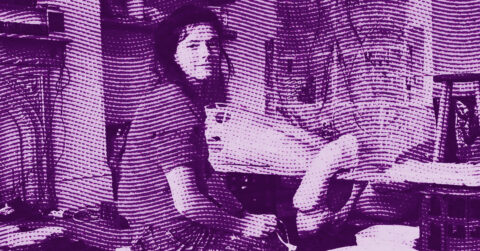Listen to me carefully, you bunch of snobs. Here is an artist who refuses conceptual shortcuts and hollow intellectual postures to offer us something far more precious: a painting that breathes, that beats, that reminds us why art exists. Yan Ping, born in 1956 in Shandong Province, has been developing for several decades a unique body of work that questions our aesthetic certainties while revealing the intimate territories of contemporary human experience.
The theater of the intimate and the universality of the particular
Yan Ping’s work is structured around a fascinating dialectic between the personal and the universal, finding in the microcosms of everyday existence material to reveal the great existential questions of our time. Her emblematic series “Mother and Child,” developed starting in 1991, does not merely document motherhood; it explores the psychological territories of identity transformation, this profound metamorphosis that occurs when a woman becomes a mother. These canvases reveal how the intimate can become the vehicle for universal questions about attachment, separation, and the continuity of being.
This approach finds its roots in a particular conception of time that the artist develops with remarkable acuity. Contrary to traditional linear narratives, Yan Ping constructs her compositions according to a cyclical temporality where past, present, and future overlap in the same pictorial space. Her “Little Opera Troupes,” a series inaugurated in 2000, perfectly illustrate this complex temporal conception. The characters evolve in suspended spacetime where the moment of performance reveals the eternity of popular Chinese art.
Thus, the artist develops a poetics of the revealing instant, those moments when the ordinary shifts toward the extraordinary through the simple grace of the artistic gaze. Her self-portraits, especially “Butterflies Are Free” from 2014, testify to this ability to transform introspection into a universal meditation on creative freedom and the metamorphoses of existence.
Bodily memory and Chinese expressionism
Yan Ping’s aesthetic approach draws its foundations from a deep understanding of European expressionism, which she reinterprets through the prism of contemporary Chinese sensitivity. This original synthesis gives birth to what could be called Chinese poetic expressionism, where Western gestural spontaneity meets Eastern calligraphic tradition.
Careful observation of her canvases reveals how the artist mobilizes bodily memory as a central artistic material. In her depictions of traditional opera actors, the bodies become living archives, bearers of a millennia-old gesture transmitted from generation to generation. This memorial dimension of the body is especially expressed in the treatment of hands and postures. As critic Wang Min’an notes, “in Yan Ping’s paintings, what deeply impresses is not the faces, not the eyes, but the bodily attitudes, the extension, the curvature, the movement, and the variations of the hands and feet” [1].
This attention to body language reveals a conception of art as emotional choreography. Yan Ping’s characters inhabit their gestures with an intensity that goes beyond simple representation to reach a form of creative trance. The artist thus mobilizes resources from traditional Chinese body art to build a contemporary visual vocabulary of remarkable expressive effectiveness.
The pictorial technique itself participates in this memorial logic. The vigorous impastos, saturated colors, and bold chromatic contrasts create a materiality of the canvas that functions like a sensitive skin, a receptacle for emotions and sensations. This pictorial materiality resonates with the Taoist philosophy of wu wei, this non-action that allows vital energy to flow freely through the work.
The critical thought of Theodor Adorno and artistic authenticity
Yan Ping’s work finds particularly relevant theoretical illumination in Theodor Adorno’s reflections on authentic art and aesthetic resistance. The German philosopher, in his “Aesthetic Theory,” develops the idea that true art must maintain a dialectical tension between form and content, between technical innovation and expressive truth [2]. Adorno’s conception of artistic authenticity helps to better understand Yan Ping’s approach and her ability to avoid the pitfalls of folkloric picturesque as well as gratuitous avant-gardism.
Adorno insists on the necessity for authentic art to resist both cultural standardization and market seduction. This resistance is not expressed by a pure and simple rejection of modernity, but by an ability to keep alive the creative tension between tradition and innovation. Yan Ping’s work perfectly illustrates this dialectic from Adorno. Her work on traditional Chinese opera is neither the result of pastist nostalgia nor superficial exoticism, but a critical reappropriation of a cultural heritage to nourish contemporary artistic expression.
The series “Love Between a Fish and a Bird,” presented in London in 2024, testifies to this dialectical approach. The poetic titles, inspired by a song by Cui Jian, reveal how the artist mobilizes the resources of contemporary popular culture to create spaces of expressive freedom. This approach corresponds exactly to what Adorno defines as the “enigmatic character” of authentic art: the ability to create meaning without ever exhausting the semantic richness of the work.
The authenticity of Yan Ping’s art also lies in her ability to maintain critical distance towards dominant ideologies. Her self-portraits, notably “I am not a mermaid,” question gender stereotypes without falling into explicit activist demands. This subtlety corresponds to what Adorno calls the “truth content” of the artwork: its ability to reveal the contradictions of reality without artificially resolving them.
Adorno’s conception of art as a “promise of happiness” also finds its expression in Yan Ping’s work. Her paintings radiate a joy of living and a celebration of existence that contrast with the prevailing pessimism of many contemporary artistic productions. This vital affirmation does not stem from blind optimism, but from a form of aesthetic resistance to the forces of disenchantment in the modern world.
Art as an existential laboratory
The recent evolution of Yan Ping’s work reveals an artist in constant mutation, refusing the ease of stylistic repetition to explore new expressive territories. Her most recent works, notably the “Silent Exuberance” series presented in Hong Kong in 2022, testify to an artistic maturity that fully embraces its experimental dimension.
The artist develops what she herself calls a “figurative poetic expressionism,” an original synthesis between the Western expressionist heritage and the Chinese aesthetic sensitivity. This hybrid approach allows her to escape the ruts of decorative multiculturalism to create an authentically personal visual language. Her recent compositions incorporate sculptural elements and references to international contemporary art without ever losing their anchoring in lived experience.
The experimental dimension of her work is particularly expressed in her relationship to color. Yan Ping uses chromatic ranges of remarkable boldness, notably these saturated pinks and greens that she describes as the colors of life, referencing hemoglobin and chlorophyll. This scientific approach to color reveals an artist concerned with grounding her aesthetic choices in a deep understanding of perceptual and symbolic mechanisms.
The artist’s social commitment also shines through in her recent works, notably “Flying Insects” (2020), a poetic meditation on contemporary conflicts, or “Let Time Fly” (2020), which subtly integrates a reproduction of Leonardo da Vinci’s “Mona Lisa” in a contemporary Chinese landscape. These cross-references testify to a cosmopolitan vision of art that refuses identity confinement without renouncing its cultural roots.
Yan Ping’s artistic practice functions as a true existential laboratory where new forms of relationship to the world are tested. Her studio becomes a space of total freedom where all contradictions and complexities of contemporary experience can be expressed. This conception of art as a space for existential research places her work in the lineage of great creators who have made their artistic practice a means of investigating reality.
Yan Ping’s art reminds us that true artistic innovation does not lie in a spectacular rupture with the past, but in the ability to reinvent inherited forms to express contemporary sensibilities. Her work constitutes a remarkable bridge between East and West, between tradition and modernity, between personal intimacy and universal questioning. In a world often dominated by commercial logics and communication strategies, Yan Ping keeps alive the demand for authenticity that makes art great. Her paintings invite us to rediscover the beauty of everyday life and the poetry of ordinary existence, reminding us that art, at its highest level, remains that “promise of happiness” that Adorno spoke of.
- Wang Min’an, “Movement, Desire and Performance – About Yan Ping’s Painting”, ArtLink, 2011.
- Theodor W. Adorno, Aesthetic Theory, Paris, Klincksieck, 1989.
















